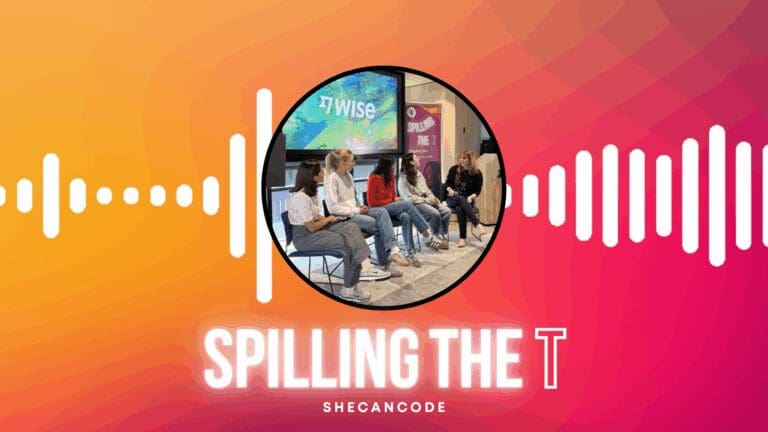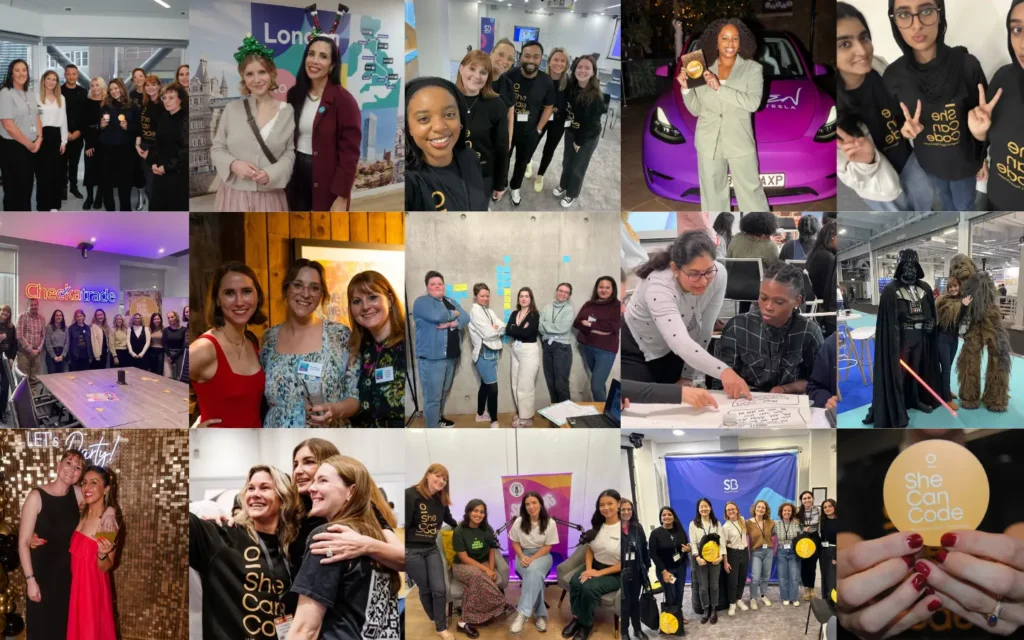In the world of technology, where change is constant and competition feels endless, many women find themselves questioning whether they truly belong.
 This is not about their actual abilities which are often strong and proven, but about an inner voice whispering: “You’re not good enough. You just got lucky. Sooner or later, they’ll find out.” This voice has a name: imposter syndrome.
This is not about their actual abilities which are often strong and proven, but about an inner voice whispering: “You’re not good enough. You just got lucky. Sooner or later, they’ll find out.” This voice has a name: imposter syndrome.
For women in IT, imposter syndrome is a common yet rarely discussed challenge. It doesn’t just affect confidence; it also holds back careers. And perhaps most ironically, it often strikes those who are the most capable and hardworking.
But here is the twist: the very spaces that can feel intimidating: conferences, professional communities, and networking events are the ones that help break through these self-doubts. By embracing them, women don’t just gain visibility; they gain proof of their value, allies for the journey, and opportunities that change the course of their careers.
This article explores how to recognize imposter syndrome, how it intersects with career opportunities, and how women can use communities and conferences not just to learn, but to grow, connect, and finally own their place in tech.
What Imposter Syndrome Looks Like in IT
Imposter syndrome isn’t a buzzword. It’s a lived experience. In IT, it often shows up in subtle but powerful ways:
- At work: You deliver a solution or fix a critical bug, but instead of celebrating, you think, “Anyone else could have done this — I just got lucky.”
- At interviews: Instead of focusing on your achievements, you worry about the one skill you haven’t mastered yet.
- At conferences: You look at the speakers or panelists and think, “I could never be like them.”
Studies confirm how widespread this is. According to KPMG’s 2022 report, 75% of executive women across industries have experienced imposter syndrome at some point in their careers. In tech, where women remain underrepresented, the pressure can be even higher.
The irony? Many women with imposter syndrome are overqualified. They pursue extra certifications, work overtime, and overdeliver, all to “prove” themselves. Instead of building confidence, this cycle deepens self-doubt.
Why Communities and Conferences Matter
So how do you fight something that exists mostly in your head? By putting yourself into spaces that remind you of reality.
Conferences and professional communities are not just about learning the latest technology trend. They are about visibility and connection. Here’s why they matter:
- Proof of Belonging
When you attend a Women in Tech conference or a specialized meetup, you quickly see that others share the same fears. Hearing a senior architect admit, “I felt like a fraud in my first leadership role” normalizes the experience. Suddenly, the inner voice loses its power. - Role Models
Representation matters. Seeing women speak on stage, lead panels, or represent major companies shows what’s possible. It also creates a mirror: if she can do it, maybe so can I. - Safe Networking
Communities, especially those focused on women in tech, often provide a safer, more inclusive environment. This makes it easier to ask questions, share stories, and build authentic connections. - Opportunities You Don’t See Online
Jobs, mentorships, collaborations these rarely appear in job boards. They happen through conversations, introductions, and trust built in communities.
The Fear of Networking
Let’s be honest: for many women, the word “networking” feels awkward. It recalls forced conversations, business cards, or selling yourself. Add imposter syndrome, and the fear doubles: “Why would anyone want to talk to me?”
But networking doesn’t have to be transactional. It can be about curiosity, not self-promotion. Instead of thinking, “What can I get from this person?” shift to: “What can I learn from this conversation?”
Practical tips for easing into networking:
- Start small: Set a goal of speaking with just 2–3 people at an event.
- Ask questions, don’t pitch: People love to share their experiences. A question like “How did you start in this field?” opens a door.
- Follow up online: A LinkedIn message saying “It was great meeting you” turns a short chat into a lasting connection.
- Join smaller circles: Workshops or roundtables often feel less intimidating than massive auditoriums.
Turning Conferences into Career Catalysts
Conferences can do more than inspire, they can change careers if approached with intention. Here’s how to make the most of them:
- Prepare a Story About Yourself
Instead of listing every role you’ve had, frame your journey as a story: “I started as a developer, discovered a passion for systems design, and now I focus on architecture that connects business and technology.” Stories stick; bullet points don’t. - Speak Up, Even in Small Ways
You don’t have to be a keynote speaker. Asking a thoughtful question in a session puts your voice in the room. People notice. - Volunteer or Get Involved
Many conferences look for volunteers, mentors, or panel contributors. This is a powerful way to meet people and build credibility. - Document the Journey
Post about your experience on LinkedIn. Share what you learned, who inspired you, and why it matters. Not only does it reinforce your learning, but it also signals your growth to your network.
Personal Stories Matter
One of the strongest ways to overcome imposter syndrome is to share your own story.
For example, imagine a young software engineer attending her first Women in Tech summit. She listens to a panel on AI ethics and realizes she has valuable insights from a project she worked on. At first, she doubts whether to speak up “Who am I to add to this conversation?” But when she does, another attendee approaches her afterward, saying: “I’m so glad you said that. I’ve been struggling with the same thing.”
That single interaction becomes the seed of a mentorship, a collaboration, or even a career pivot.
Communities Beyond Conferences
Not everyone can travel often, but online communities bring the same power:
- Slack groups for women in tech
- LinkedIn groups and hashtags (#WomenInTech, #SheCanCode, #TechLeadership)
- Local meetups that happen monthly or quarterly
Joining these spaces keeps the momentum going after the conference high fades. The more you participate, the more natural it feels to show up confidently.
Practical Exercises to Challenge Imposter Syndrome
Conferences and communities work best when combined with personal practices. Here are three that many women find helpful:
- The Evidence Journal
Write down your achievements weekly: projects completed, skills learned, positive feedback. When imposter thoughts appear, you have evidence to counter them. - The Confidence Buddy
Partner with a colleague or friend. Before a big event, remind each other of your strengths. Sometimes hearing it from someone else makes it more real. - The “What If I Belonged?” Question
Before walking into a room, ask: “What would I do right now if I truly believed I belonged here?” Then act accordingly.
Imposter syndrome is not a flaw; it’s a sign that you are stretching into spaces of growth. But it doesn’t have to hold you back.
By leaning into conferences and communities, women in IT can transform fear into fuel. These spaces provide role models, allies, and opportunities that no online course or book can replace. More importantly, they remind you that you are not alone and that your voice, skills, and perspective are valuable.
So, the next time imposter thoughts appear, don’t retreat. Step into the room, introduce yourself, and remember: the very act of showing up is already proof that you belong.








